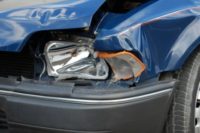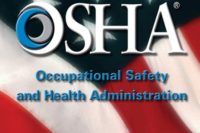The high cost of road repair
122 workers killed in highway work zones last year

 June 11, Howard County, Maryland: A highway worker was struck and killed while placing cones on westbound Route 216 at Route 29. He was wearing his reflective shirt at the time of the collision.
June 11, Howard County, Maryland: A highway worker was struck and killed while placing cones on westbound Route 216 at Route 29. He was wearing his reflective shirt at the time of the collision.
August 5, Aug 5: Marshalltown, Iowa: A highway worker was critically injured along Interstate 80/35 when he walked into the path of an excavator and was then run over by the front tires.
August 25, Essex County, Virginia: A state trooper and a highway engineer who were standing together off the right side of the highway were injured when a pickup truck driver ran through a highway work zone on U.S. 17 and went over a curb. Both men are expected to recover.
Fatalities increasing
Nationwide, 122 workers were killed in highway work zones in 2012, according to the Bureau of Labor Statistics (BLS). That figure has been creeping steadily upward; there were 101 highway worker deaths in 2008, 116 in 2009 and 106 in 2010.
According to the Centers for Disease Control and Prevention (CDC), transportation incidents accounted for 76 percent of roadway work zone fatal occupational injuries in 2011. In seventy percent of these transportation incidents, a pedestrian worker was stuck by a vehicle.
Traffic experts cite a variety of reasons for work zone accidents. In states with long winters a great deal of road work must be accomplished within a few short months, which means many work zones operating concurrently and can lead to increased impatience on the part of motorists.
The four deadliest states
That theory doesn’t account for the fact that four warm-weather states: Texas, Georgia, California and Florida had the most motor vehicle crash fatalities in work zones in 2011—each with at least 40 deaths in a work zone.
Driver inexperience – a factor in many types of accidents – can also come into play (the driver in the fatal Maryland accident was 17 years old).
Evening and nighttime work offers some benefits, but has safety drawbacks as well. Closing lanes when traffic is at lower levels causes shorter backups and road crews are around fewer cars. However, the visibility at night as night as great.
In 2011, sixty-eight percent of occupational fatalities in work zones were to construction laborers, first-line supervisors of construction an extraction workers, heavy and tractor trailer truck drivers, construction equipment operators, and highway maintenance workers.
Prevention information
The CDC has a Highway Work Zone Safety Page which includes strategies for preventing roadway crashes. Click here for more information.
Looking for a reprint of this article?
From high-res PDFs to custom plaques, order your copy today!








